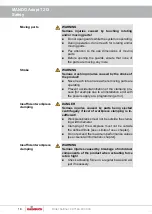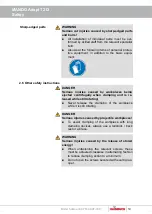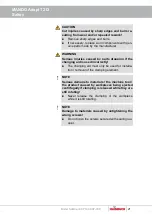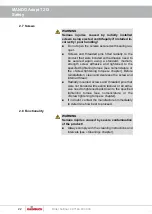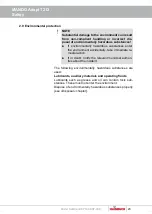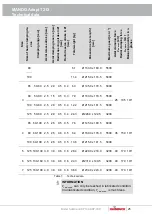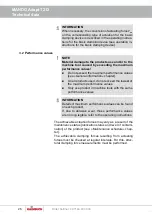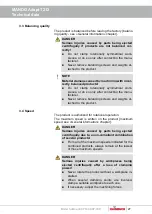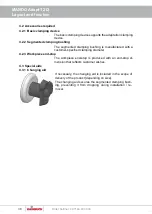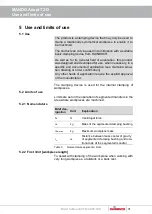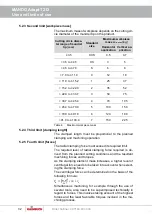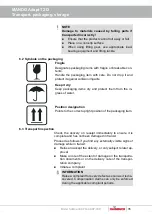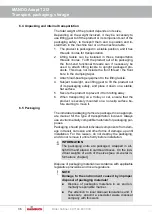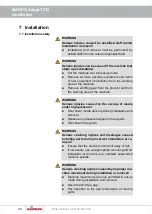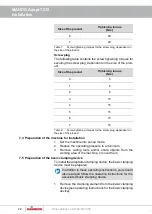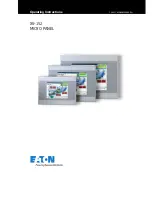
MANDO Adapt T212
Use and limits of use
32
Order h49 7144.907-333
5.2.3 Second limit [workpiece mass]
The maximum mass of workpiece depends on the cutting cir-
cle diameter of the mandrel tip on the product.
Cutting circle diame-
ter range of mandrel
tip
[𝒎𝒎]
Standard
size
Maximum workpiece
mass
𝒎
𝒘 𝒎𝒂𝒙
[𝒌𝒈]
Horizontal
application
Vertical ap-
plication
≤3.5
XXS
0.5
0.7
> 3.5 to ≤ 4.5
XS
3
5
> 4.5 to ≤ 7.0
S
6
8
> 7.0 to ≤ 11.9
0
12
18
> 11.9 to ≤ 15.2
1
25
37
> 15.2 to ≤ 22.0
2
35
52
> 22.0 to ≤ 33.7
3
50
75
> 33.7 to ≤ 45.4
4
70
105
> 45.4 to ≤ 70.0
5
100
150
> 70.0 to ≤ 91.0
6
120
180
> 91.0 to ≤ 109.0
7
150
225
Table 4:
Maximum workpiece mass
5.2.4 Third limit [clamping length]
The clamped length must be proportional to the planned
clamping and machining operation.
5.2.5 Fourth limit [forces]
The radial clamping force must exceed its required limit.
The required level of radial clamping force required is de-
rived from the planned cutting conditions and the resultant
machining forces and torques.
As the clamping element mass increases, a higher level of
centrifugal force needs to be taken into account when select-
ing the clamping force.
The centrifugal force can be determined on the basis of the
following formula:
𝐹
𝑧
= (
𝜋∗𝑛
30
)
2
∗ 𝑚 ∗ 𝑟
𝑠
Simultaneous machining, for example through the use of
several tools, also need to be superimposed technically in
regard to forces. This involves taking account of the highest
forces and the least favorable torques involved in the ma-
chining process.

